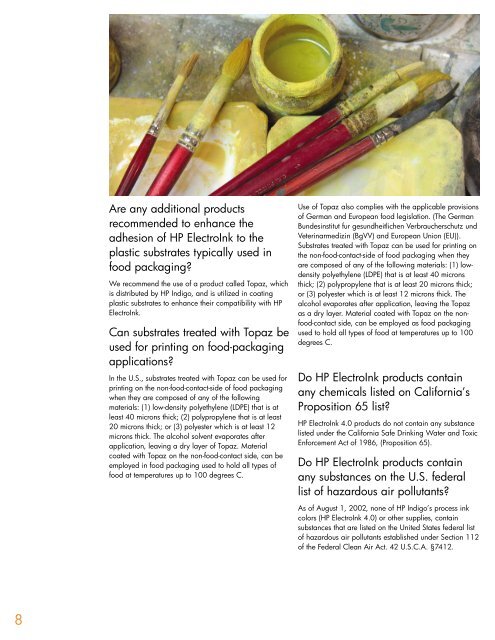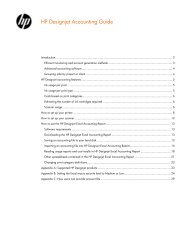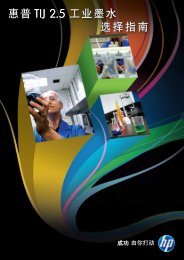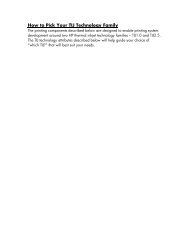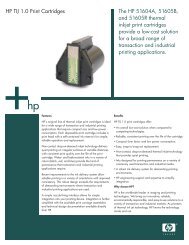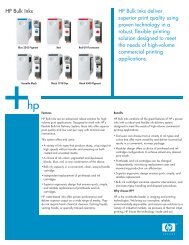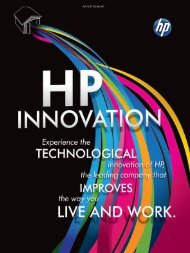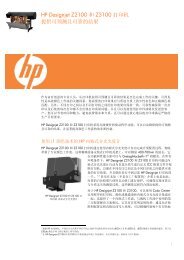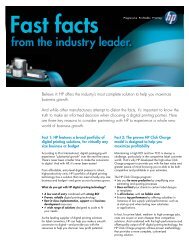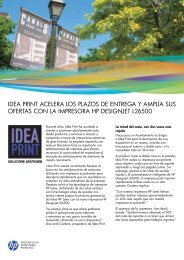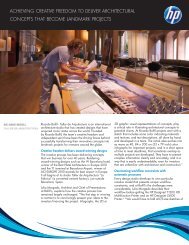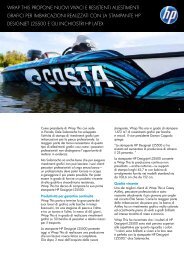HP ElectroInk Frequently Asked Questions - Hewlett Packard
HP ElectroInk Frequently Asked Questions - Hewlett Packard
HP ElectroInk Frequently Asked Questions - Hewlett Packard
Create successful ePaper yourself
Turn your PDF publications into a flip-book with our unique Google optimized e-Paper software.
8<br />
Are any additional products<br />
recommended to enhance the<br />
adhesion of <strong>HP</strong> <strong>ElectroInk</strong> to the<br />
plastic substrates typically used in<br />
food packaging?<br />
We recommend the use of a product called Topaz, which<br />
is distributed by <strong>HP</strong> Indigo, and is utilized in coating<br />
plastic substrates to enhance their compatibility with <strong>HP</strong><br />
<strong>ElectroInk</strong>.<br />
Can substrates treated with Topaz be<br />
used for printing on food-packaging<br />
applications?<br />
In the U.S., substrates treated with Topaz can be used for<br />
printing on the non-food-contact-side of food packaging<br />
when they are composed of any of the following<br />
materials: (1) low-density polyethylene (LDPE) that is at<br />
least 40 microns thick; (2) polypropylene that is at least<br />
20 microns thick; or (3) polyester which is at least 12<br />
microns thick. The alcohol solvent evaporates after<br />
application, leaving a dry layer of Topaz. Material<br />
coated with Topaz on the non-food-contact side, can be<br />
employed in food packaging used to hold all types of<br />
food at temperatures up to 100 degrees C.<br />
Use of Topaz also complies with the applicable provisions<br />
of German and European food legislation. (The German<br />
Bundesinstitut fur gesundheitlichen Verbraucherschutz und<br />
Veterinarmedizin (BgVV) and European Union (EU)).<br />
Substrates treated with Topaz can be used for printing on<br />
the non-food-contact-side of food packaging when they<br />
are composed of any of the following materials: (1) lowdensity<br />
polyethylene (LDPE) that is at least 40 microns<br />
thick; (2) polypropylene that is at least 20 microns thick;<br />
or (3) polyester which is at least 12 microns thick. The<br />
alcohol evaporates after application, leaving the Topaz<br />
as a dry layer. Material coated with Topaz on the nonfood-contact<br />
side, can be employed as food packaging<br />
used to hold all types of food at temperatures up to 100<br />
degrees C.<br />
Do <strong>HP</strong> <strong>ElectroInk</strong> products contain<br />
any chemicals listed on California’s<br />
Proposition 65 list?<br />
<strong>HP</strong> <strong>ElectroInk</strong> 4.0 products do not contain any substance<br />
listed under the California Safe Drinking Water and Toxic<br />
Enforcement Act of 1986, (Proposition 65).<br />
Do <strong>HP</strong> <strong>ElectroInk</strong> products contain<br />
any substances on the U.S. federal<br />
list of hazardous air pollutants?<br />
As of August 1, 2002, none of <strong>HP</strong> Indigo’s process ink<br />
colors (<strong>HP</strong> <strong>ElectroInk</strong> 4.0) or other supplies, contain<br />
substances that are listed on the United States federal list<br />
of hazardous air pollutants established under Section 112<br />
of the Federal Clean Air Act. 42 U.S.C.A. §7412.


